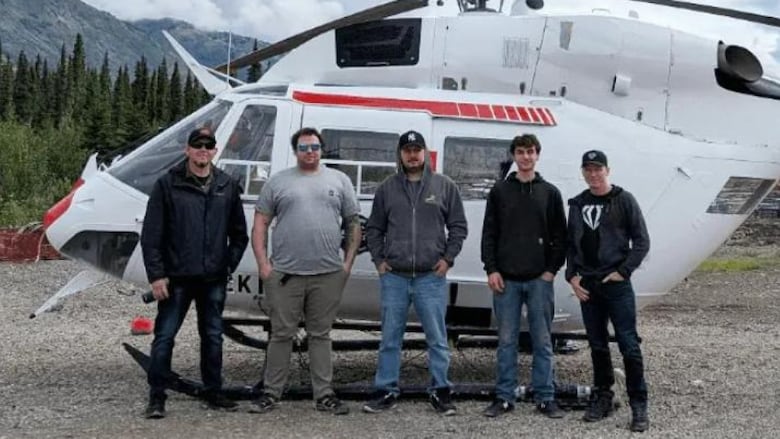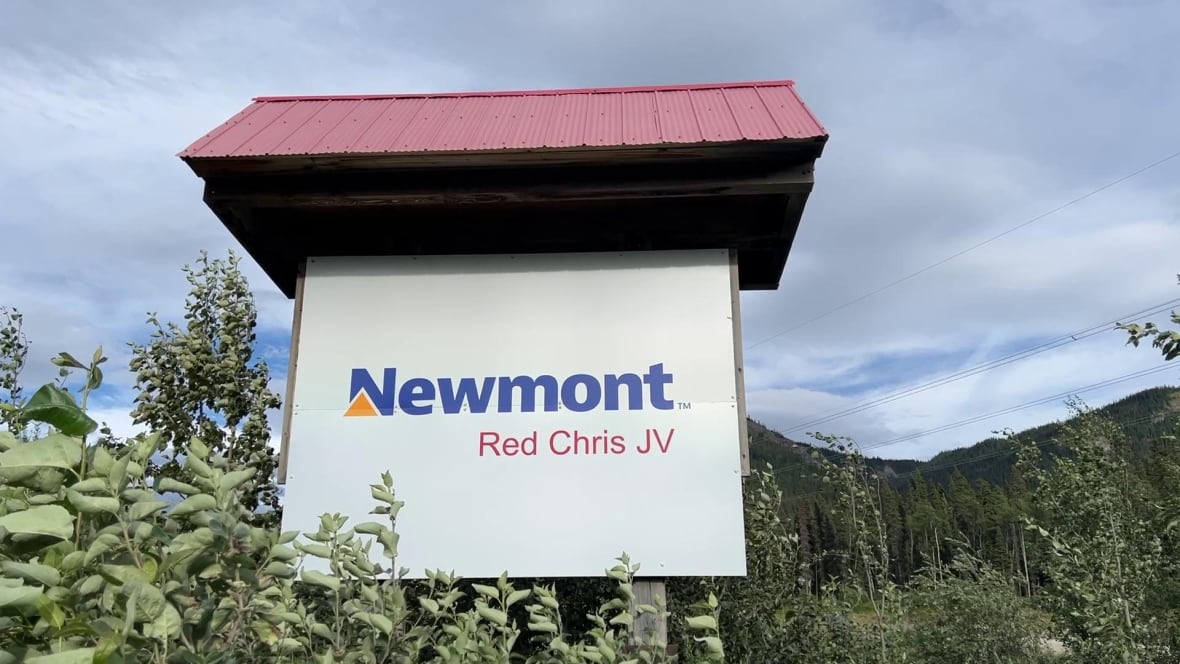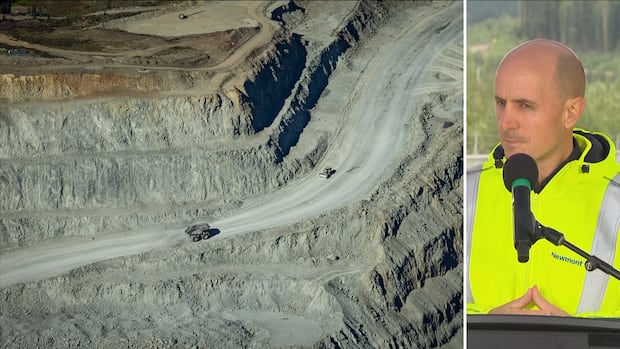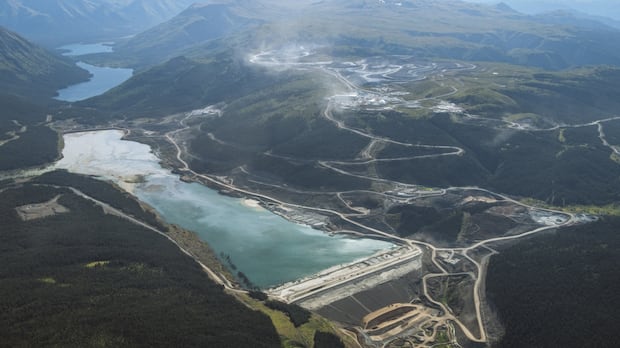Rescued workers being reunited with families after 60 hours trapped in B.C. mine
'Their arrival was a moment of relief for everyone involved,' says company safety head

The three workers who were trapped for more than 60 hours in the Red Chris mine in northern B.C. are being reunited with their families Friday morning following a successful rescue operation.
"Their arrival was a moment of relief for everyone involved," said Bernard Wessels, head of safety for the mine operator, Newmont Corp., at a news conference early Friday.
"We are deeply relieved that all three individuals are safe and in good health and good spirits."
Newmont Corp. says the three workers were freed at 10:40 p.m. PT Thursday. They've been identified by their contractor, Hy-Tech Drilling, as Kevin Coumbs of Ontario, Darien Maduke of B.C. and Jesse Chubaty of Manitoba.
The drillers had been trapped underground since Tuesday morning when two rockfalls cut them off. The mine is located on Tahltan Nation territory near Dease Lake, B.C., about 420 kilometres west of Fort Nelson, B.C.
The three confirmed with Hy-Tech Drilling by radio that they had made their way to a steel refuge chamber after the first fall, before a second collapse severed communications.
Wessels said excavation of debris from the access tunnel began at 8 p.m. PT on Thursday. Once a safe path had been cleared, rescue crews entered with a specialized vehicle and drove the workers to the surface.
"This was a carefully planned and meticulously executed plan," Wessels said.

According to Wessels, the workers were in good spirits and joked that they had used the time to catch up on sleep.
But he said Newmont is taking what happened seriously and will be providing the workers with any counselling they may need.
'We just wanted to get through this process'
The workers — described by Hy-Tech as diamond drillers, meaning they cut through rock using drill bits embedded with industrial diamonds — were working more than 500 metres past the affected zone when the first rocks fell at 7:47 a.m. PT on Tuesday.
They were then asked to relocate to the refuge before the second, bigger fall around 10:30 a.m. Newmont has said the refuge chamber was designed to support 16 people with enough air, food and water for an extended stay.
Both falls occurred in the same area, about 700 metres from the refuge chamber, which is about 284 metres below the ground's surface, according to Wessels.
He said the rescue "took more time" as they wanted to ensure the area was "geologically and technically" stable before sending out rescue teams.
"We were nervous and we just wanted to get through this process, but the one important thing is we kept ourselves patient so that we could do this in a safe way," he said.
Newmont said it used specialized drones to assess geotechnical conditions underground. A remote-controlled scoop removed a pile of debris 20- to 30-metres long and seven- to eight-metres high to reach the trapped workers.
The rescue team then transported the workers one by one using the same protective vehicle they used to get there.
B.C. Premier David Eby hailed the outcome and the "heroic work of the rescue team" in a post to social media Friday.
"The three drillers demonstrated remarkable courage over the 60-plus hours of being trapped underground," he said.
In a statement, B.C. Minister of Mining and Critical Minerals Jagrup Brar said the rescue marks a "proud day" for the province.
"As we move forward, we reflect on the impact of this incident and the lessons we can glean from it."
The ministry has launched an investigation into what happened.
Underground mining paused
Newmont says it will also be conducting its own independent investigation into the rockfalls, and that underground mining operations at Red Chris will be paused until it is complete. The open-pit mine at the site, which is separate from the underground project, will continue to run.
The Red Chris mine, one of 18 resource projects that B.C. announced it would be fast-tracking in response to U.S. tariff threats, is mostly open pit, but Newmont said in an earlier statement that development of underground block-cave mining began in 2019 — four years after the mine's first production date.
The access way to the tunnel where the three drillers were working opened in 2023.
Block-cave mining is a technique that involves digging underground to target the ore from below, according to a Newmont communications video on the company's website.
The company has estimated that switching to the new mining method would extend the mine's lifespan by 13 years, beyond its forecasted end of life in 2027.
With files from The Canadian Press, Johna Baylon, Andrew Kurjata

